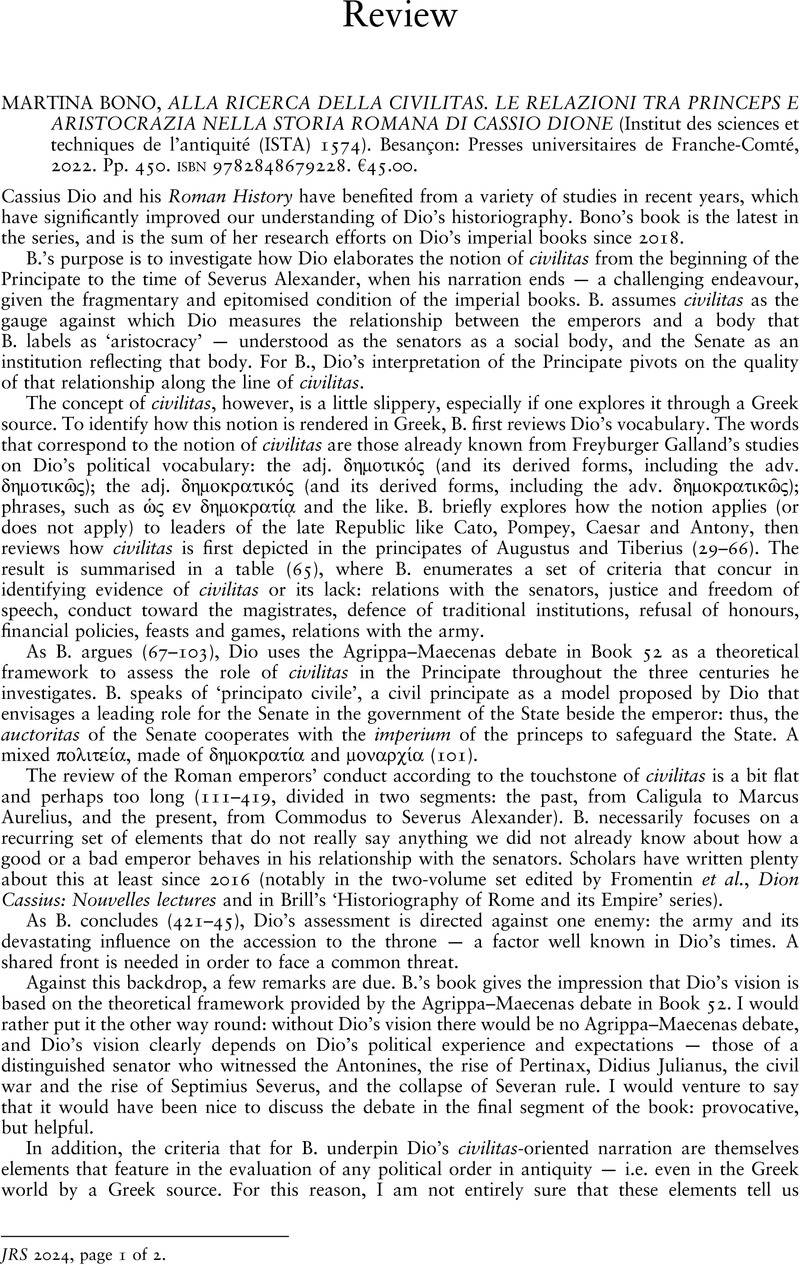No CrossRef data available.
Article contents
MARTINA BONO, ALLA RICERCA DELLA CIVILITAS. LE RELAZIONI TRA PRINCEPS E ARISTOCRAZIA NELLA STORIA ROMANA DI CASSIO DIONE (Institut des sciences et techniques de l'antiquité (ISTA) 1574). Besançon: Presses universitaires de Franche-Comté, 2022. Pp. 450. isbn 9782848679228. €45.00.
Review products
MARTINA BONO, ALLA RICERCA DELLA CIVILITAS. LE RELAZIONI TRA PRINCEPS E ARISTOCRAZIA NELLA STORIA ROMANA DI CASSIO DIONE (Institut des sciences et techniques de l'antiquité (ISTA) 1574). Besançon: Presses universitaires de Franche-Comté, 2022. Pp. 450. isbn 9782848679228. €45.00.
Published online by Cambridge University Press: 14 March 2024
Abstract
An abstract is not available for this content so a preview has been provided. Please use the Get access link above for information on how to access this content.

- Type
- Reviews
- Information
- Copyright
- Copyright © The Author(s), 2024. Published by Cambridge University Press on behalf of The Society for the Promotion of Roman Studies


